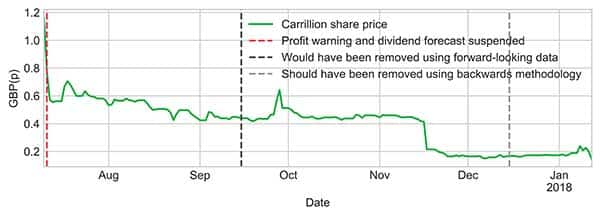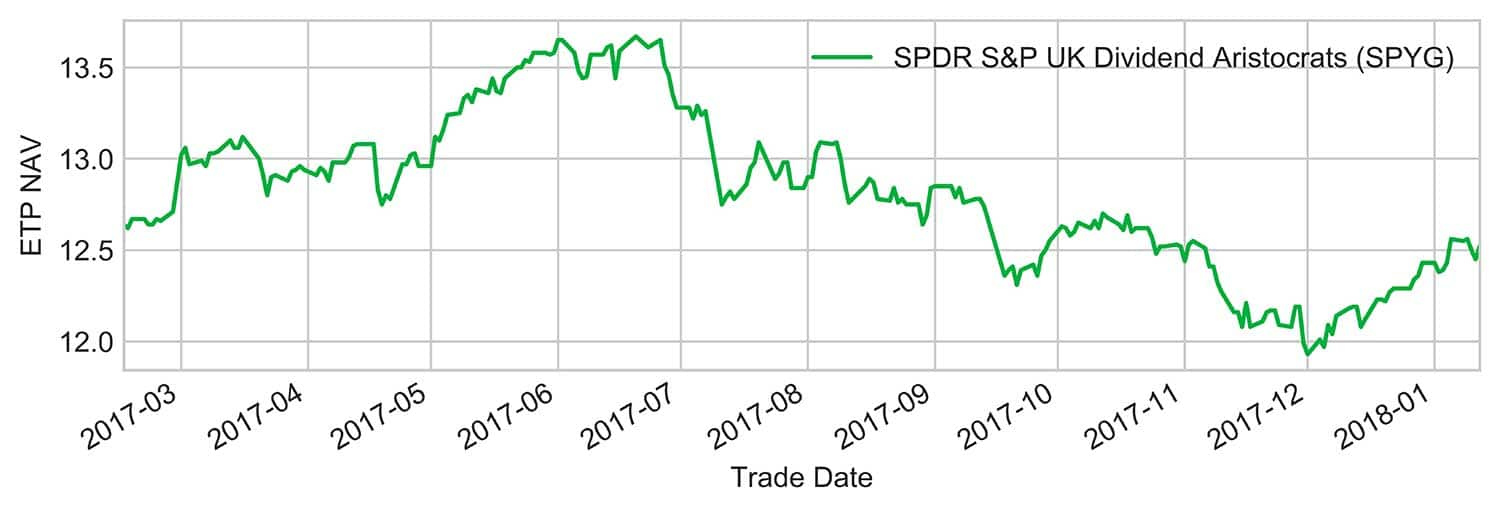Not all aristocrats are as rich as they appear
Past performance is no guide when it consists of trailing dividend payouts
- SPYG:XETR (UKDV:XLON) ETF could have improved performance by 87bps by avoiding £840,000 of extra losses on Carillion
- Currently holds £1.5m stake in Capita, which has also said it will suspend dividends
- Capita could remain a dividend aristocrat until September on existing methodology
Dividend ETFs are one of the key success stories of the investment product. Since their genesis in 2003, these products, which invest in companies with high yielding shares, have seen AUM grow to over $185bn. Although European investors have trailed the US market in ETF adoption, AUM for European dividend strategy ETFs now stand at $8.5bn, double the 2013 level. However, upheavals in some of the historically strong dividend paying sectors could leave investors who have piled into dividend ETFs disappointed.
The Financial Times reported this week that the collapse of Carillion, the UK’s second-largest construction group, led to unexpected losses for investors in a popular exchange traded fund that follows high-dividend stocks. The index which the ETF tracks, the S&P UK Dividend Aristocrats, continued to hold Carillion until it went into administration on January 17th, but should have been removed at the December 2017 rebalance.
Regardless of this oversight, under the existing methodology Carillion would still have been included for five months after management said it would scrap payments. This is because the index, like the vast majority of dividend indices, relies exclusively on backwards-looking dividend data. It selects dividend payers by screening out potential constituents which have cut payments in previous years; however, past performance is definitely no guide when it consists of trailing dividend payouts.

Because Carillion historically paid its interim dividends in the first week of November, the dividend suspension is only registered after this date – hence a December removal. But if the index incorporated a forward-looking data source, the stock could have been removed at the September rebalance, taking into account the new dividend policy.
Carillion was allocated a 1.38% weighting in the SPDR S&P UK Dividend Aristocrats ETF, which held assets of £99.8m at the September rebalance. This translates to a stake of around £1.38m. Immediately prior to the December rebalance, when the stock ought to have been removed, the weighting had fallen to 0.53%, translating to a stake of £542,000. This drop of £840,000 between September and December is more significant than the final loss, and could have been avoided if index providers or issuers incorporated a forward-looking aspect into their selection criteria. In ETF performance terms, had Carillon been removed and the cash held, this would have boosted performance in the quarter by 87bps.
What is even more challenging for the investors in these products is that this is not an isolated case. Capita is a current constituent of the S&P UK Dividend Aristocrats. It accounts for 1.58% of the SPYG:XETR (UKDV:XLON) ETF, with a stake worth £1.5bn. Capita has stated that it will not declare a final dividend this year and is planning to raise equity by way of a rights issue during the year. Since the Capita final dividend typically trades ex-dividend in May before being paid in July, the stock might not be dropped until the September rebalance – after the “payment” date. This could result in the incongruous situation where an index that targets high or growing dividends holds a non-dividend paying stock through two quarterly rebalances, because of its unresponsiveness to adapt to change.
Very few dividend cuts are as well signalled as these two examples. We recently identified which UK dividends are most stretched, and two other names in the UK aristocrats index were highlighted as having weak financial ratios or stock specific headwinds. Investors should pay attention to dividend forecasts and form their views about the dividend prospects for the constituent stocks within the crop of European dividend ETFs.

S&P Global provides industry-leading data, software and technology platforms and managed services to tackle some of the most difficult challenges in financial markets. We help our customers better understand complicated markets, reduce risk, operate more efficiently and comply with financial regulation.
This article was published by S&P Global Market Intelligence and not by S&P Global Ratings, which is a separately managed division of S&P Global.
